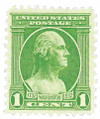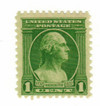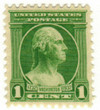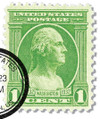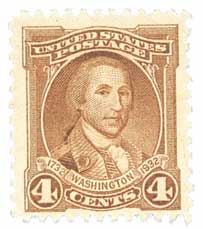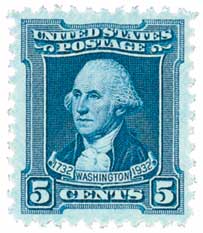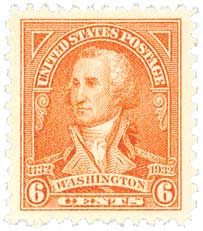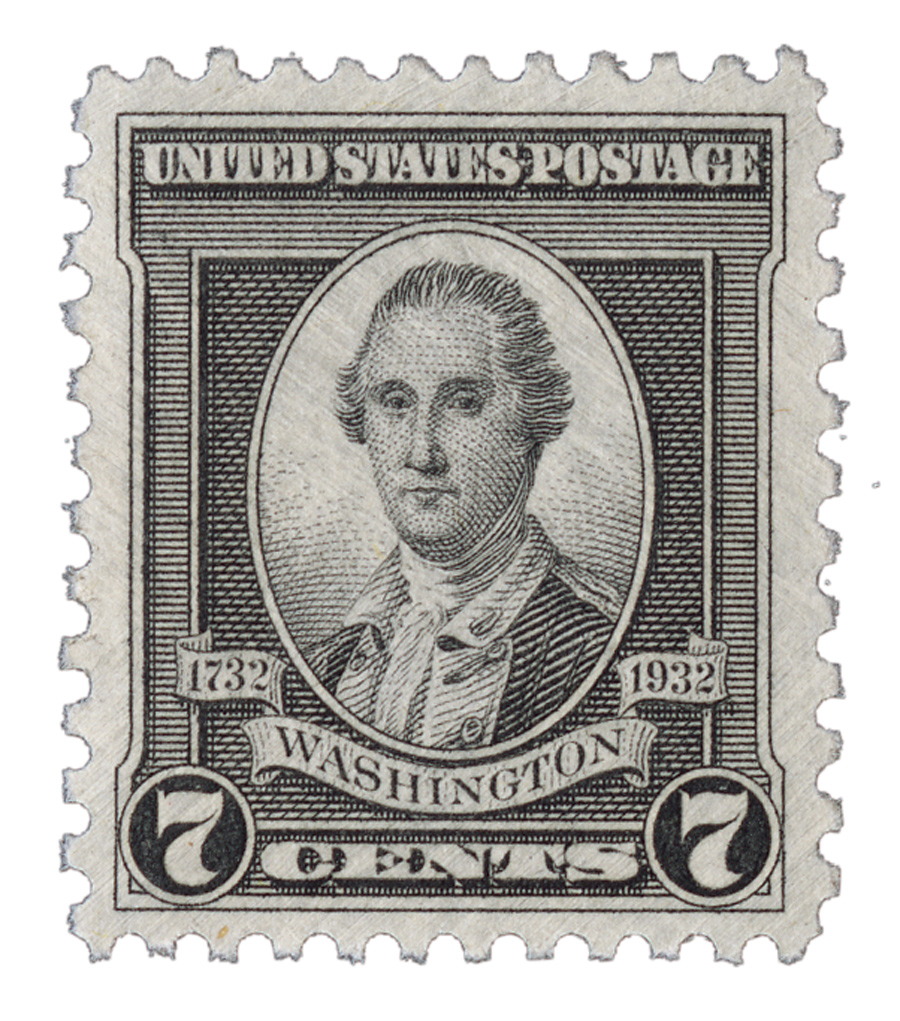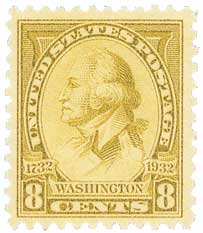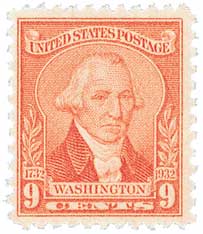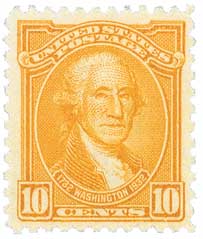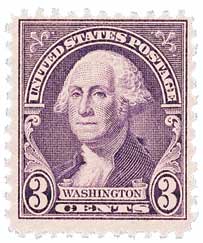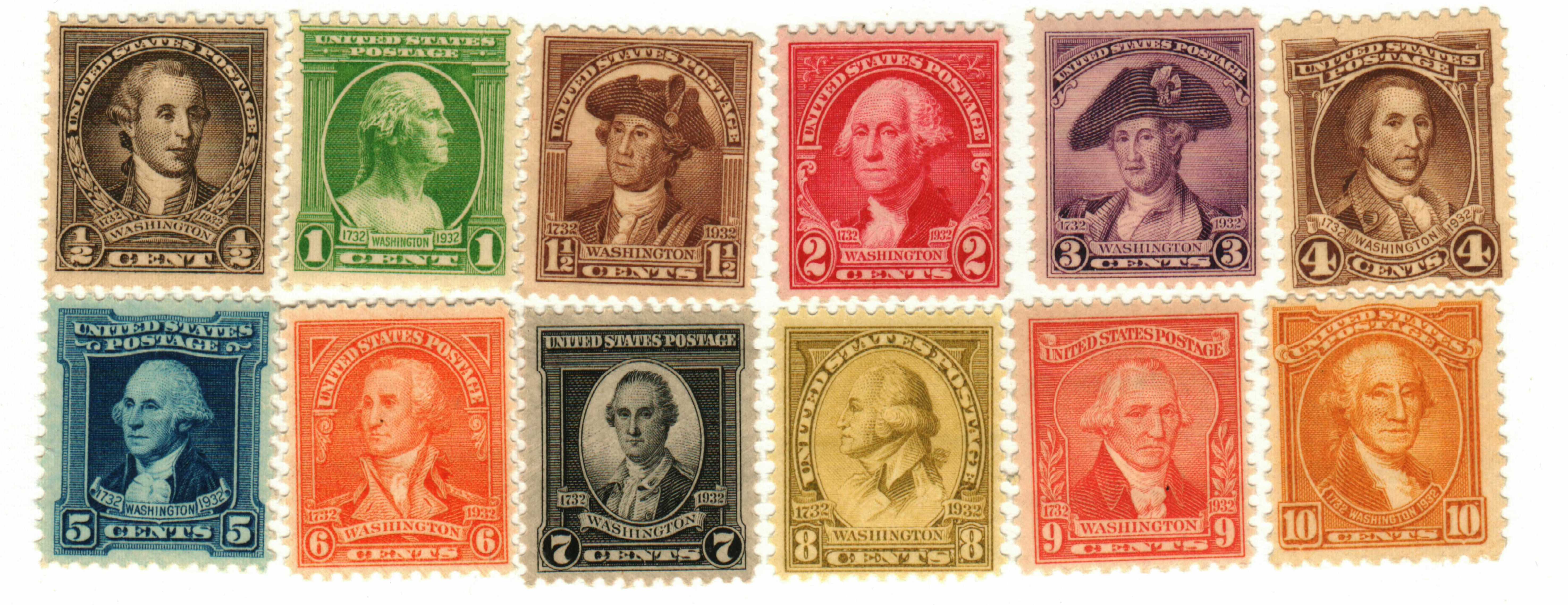
# 705 - 1932 Washington Bicentennial: 1c Washington from the Houdon Bust
1932 1¢ Washington
Washington Bicentennial Issue
Issue Date: January 1, 1932
First City: Washington, DC
Quantity Issued: 1,265,555,100
George Washington
Washington Bicentennial
On January 1, 1932, the US Post Office Department issued a set of 12 stamps honoring the 200th anniversary of George Washington’s birth.
The Post Office officially announced their plans for the set of stamps in November 1930. Early on, they had grand ideas for the set.
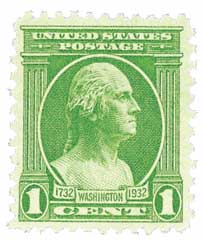
At one point, the set was to consist of at least 18 stamps with all values between ½¢ and $5. Prior to that, the largest set issued was the Columbians, which had comprised 16 stamps. The Post Office also considered using the same wide format of the Columbians for the Washington Bicentennials.
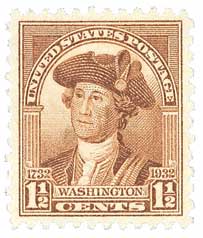
The plan was to create two-color stamps with grand scenes retelling Washington’s life – crossing the Delaware, his 1793 inauguration, his home life, his birthplace, resigning his commission, a double portrait with his wife Martha, his tomb at Mount Vernon, and the Washington Monument. However, the Post Office eventually decided against the plan because they would have to use famous paintings that were known to be filled with inaccuracies.

At one point, Congress considered a bill that proposed that all the stamps issued in 1932 bear Washington’s portrait, but that bill was never passed. In the end, the Post Office decided to produce a set of 12 single color stamps picturing portraits by famous artists that showed Washington at different times in his life.
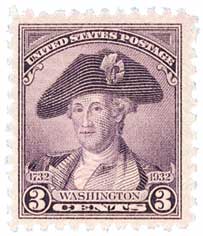
As a result, several of the stamps pictured unfamiliar images of Washington. But the Post Office specifically selected the famed and beloved Gilbert Stuart Athenaeum portrait for the 2¢ stamp. At the time, 2¢ was the normal first-class letter rate, so that would have been the most used stamp at the time. However, a few months after the series was issued, the first-class letter rate was raised to 3¢.
The Post Office conducted an emergency reprinting of the 3¢ Washington Bicentennial stamp as well as the current 3¢ Lincoln regular issue. But there still weren’t enough of the stamps to satisfy demand. And the Post Office knew that the portrait on the 3¢ stamp was little known to most people. So they decided to rework the 2¢ Athenaeum design. They made it a 3¢ stamp and removed the date ribbons next to the portrait, so it would essentially be a regular issue.
1932 1¢ Washington
Washington Bicentennial Issue
Issue Date: January 1, 1932
First City: Washington, DC
Quantity Issued: 1,265,555,100
George Washington
Washington Bicentennial
On January 1, 1932, the US Post Office Department issued a set of 12 stamps honoring the 200th anniversary of George Washington’s birth.
The Post Office officially announced their plans for the set of stamps in November 1930. Early on, they had grand ideas for the set.

At one point, the set was to consist of at least 18 stamps with all values between ½¢ and $5. Prior to that, the largest set issued was the Columbians, which had comprised 16 stamps. The Post Office also considered using the same wide format of the Columbians for the Washington Bicentennials.

The plan was to create two-color stamps with grand scenes retelling Washington’s life – crossing the Delaware, his 1793 inauguration, his home life, his birthplace, resigning his commission, a double portrait with his wife Martha, his tomb at Mount Vernon, and the Washington Monument. However, the Post Office eventually decided against the plan because they would have to use famous paintings that were known to be filled with inaccuracies.

At one point, Congress considered a bill that proposed that all the stamps issued in 1932 bear Washington’s portrait, but that bill was never passed. In the end, the Post Office decided to produce a set of 12 single color stamps picturing portraits by famous artists that showed Washington at different times in his life.

As a result, several of the stamps pictured unfamiliar images of Washington. But the Post Office specifically selected the famed and beloved Gilbert Stuart Athenaeum portrait for the 2¢ stamp. At the time, 2¢ was the normal first-class letter rate, so that would have been the most used stamp at the time. However, a few months after the series was issued, the first-class letter rate was raised to 3¢.
The Post Office conducted an emergency reprinting of the 3¢ Washington Bicentennial stamp as well as the current 3¢ Lincoln regular issue. But there still weren’t enough of the stamps to satisfy demand. And the Post Office knew that the portrait on the 3¢ stamp was little known to most people. So they decided to rework the 2¢ Athenaeum design. They made it a 3¢ stamp and removed the date ribbons next to the portrait, so it would essentially be a regular issue.




